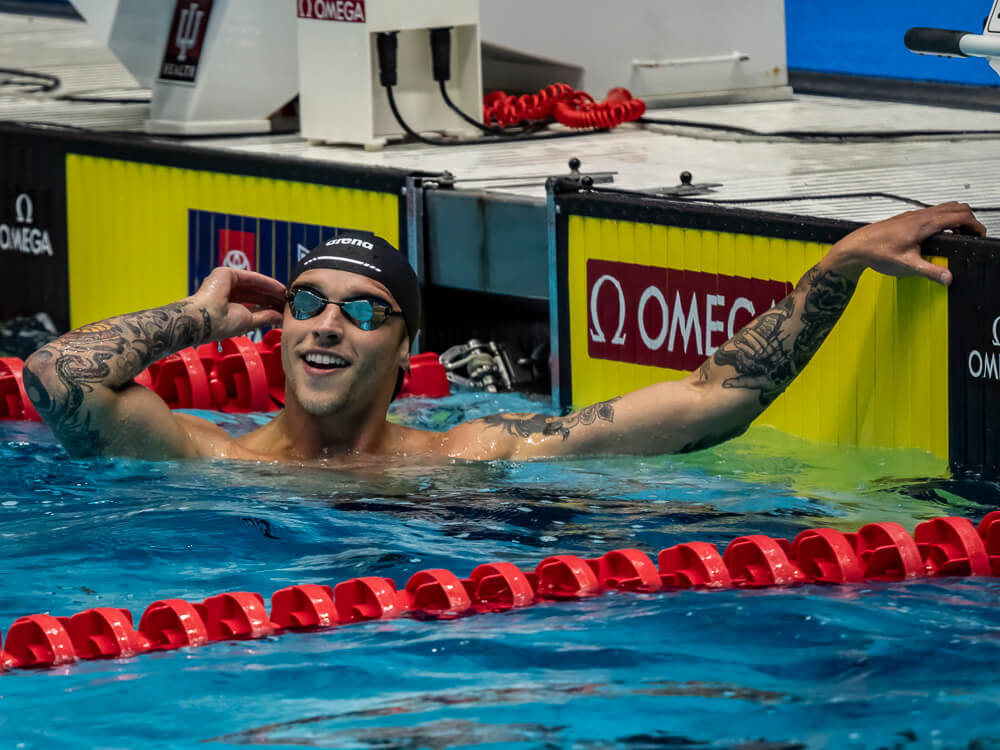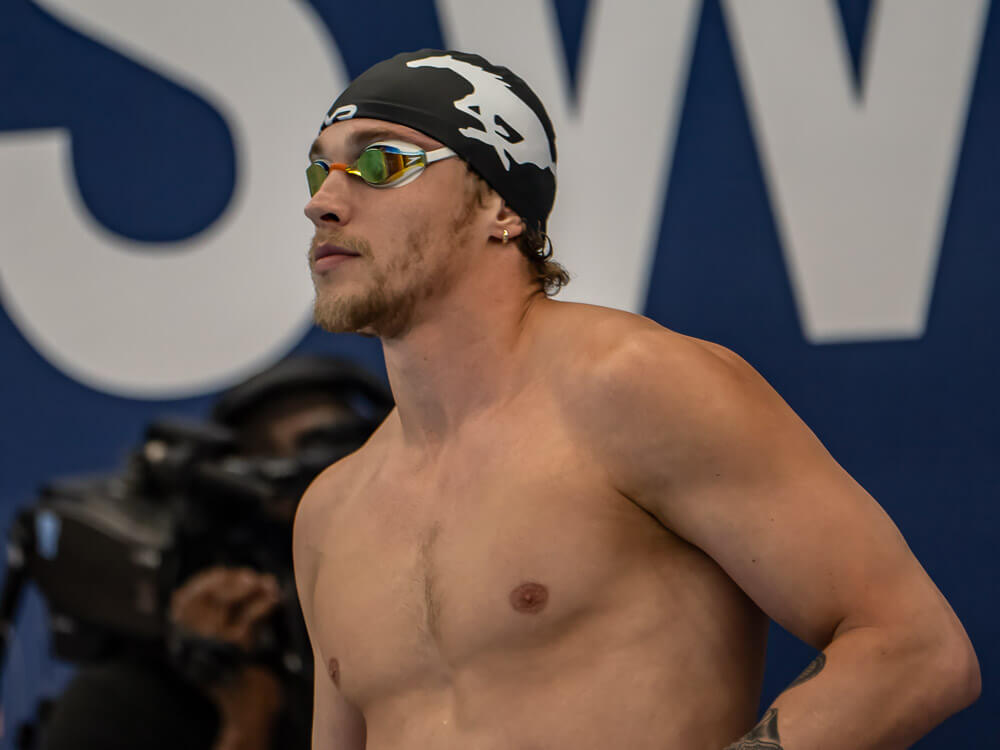What Santo Condorelli’s Worlds Qualification Says about the State of American Sprinting

What Santo Condorelli Worlds Qualification Says about the State of American Sprinting
Chances are you had a polarized reaction to Santo Condorelli qualifying for the World Championships for Team USA.
Santo Condorelli, in 2025, swimming for the U.S.? At a meet that is supposed to usher in new talents to start a new Olympic cycle?
It is, from one angle, a testament to Condorelli, who set a best time at age 30 after a year of adversity. It is also, from the larger view, an indictment that in 2025, Condorelli is the second-best sprinter America has.
What Condorelli accomplished at the IU Natatorium should not be overlooked. The unusual path he’s taken to this point is not replicable in charting the larger direction of the American program, but it is laudably unique.

Santo Condorelli; Photo Courtesy: Peter H. Bick
Condorelli was born in Japan and raised in Oregon. He swam at U.S. Olympic Trials in 2012, then opted to compete for the country of his mother’s birth, Canada. So far, so normal.
Condorelli represented Canada at the 2016 Olympics, finishing fourth in the 100 free in Rio. He won a bronze medal on a Canadian relay at Worlds in 2015, plus four Pan Am Games medals that year. Then he flipped to the nation of his father’s birth, winning Olympic silver with Italy’s 400 free relay in Tokyo. He made a bid to represent the U.S. at the Paris Olympics but was ineligible to compete at Trials last summer. He still pursued his late-career American swimming dream, even after his father passed away in January. (Santo and Joseph Condorelli had an infamously colorful relationship, shown most poignantly in their pre-race routine.)
“That was my father and I’s goal, going to Paris,” Condorelli said. “That was always our goal, and unfortunately, wasn’t able to do that. But we still always wanted that to be a thing. And I lost my father back in January, so I felt like I kind of had no choice but at least try. So that’s why I’m here today.
“It’s a weird feeling, because it’s almost more at peace, because I’m just doing it for myself. You know, I love my dad and his motivation, everything. But, man, he was a hard ass at times. But at the same time, I know he was there with me tonight.”
All that makes what Condorelli did in Indy remarkable, on top of the years he rolled back in the swim. He went 21.68 in finals. It’s tied with Kyle Chalmers for the eighth-fastest time in the world in 2025. The time was Condorelli’s career-best, .15 seconds better than the time he set at the 2016 Olympics nearly a decade ago. His 21.87 in prelims and the finals time are two of just eight all-time sub-22 second swims. For Condorelli to be doing this at 30 richly deserves a spot on Team USA.
The only concern he brings is a familiar one in American male swimming at the moment: That no one younger or with more ostensible upside is better.
American trials produced five A cuts, a decent return. (Australian trials also had five.) Behind Condorelli was Jonny Kulow in 21.73, with Quintin McCarty fourth in 21.79 and Chris Guiliano fifth in 21.86. Jack Alexy won the event, with what was then a world-leading time of 21.36, since topped by Cameron McEvoy’s 21.30. The group of course didn’t include Caeleb Dressel, the Tokyo Olympic champion.
Anyone looking to Trials to either produce a new or reinforce an old sprint frontrunner would’ve been disappointed. Guiliano, who matched Matt Biondi’s 50/100/200 free qualification treble last summer, was inconsistent again. He was third in the 100 free, passed by Alexy and Patrick Sammon on the final 50, to earn just a relay spot, to go with fifth in the 50 free and seventh in the 200 free.
Guiliano has more often then not failed to deliver on big (non-trials) stages. He was 19th in the 200 free and 17th in the 50 in Paris, failing to make either semifinal much less the final. He was also 18th in prelims in Worlds in 2023. In Paris, he made the final of the 100 free, finishing eighth, swam a solid leg on the 400 free relay, didn’t make the final squad in the 800 free relay and was passed up for both prelims and finals of the men’s medley relay. That’s not the track record of a Team USA stalwart, and this year’s trials didn’t do anything to dispel that fear.
Sammon, Kulow and McCarty have all been successful short-course swimmers looking to project up to the bigger pool. All need to grow plenty in the next three years to be the kind of swimmer who can join Alexy in an Olympic final. Alexy has taken steps forward year after year into a bona fide star, and the depth in the program is enough to keep the U.S. among the relay favorites. Of the bright young talents on the American scene – Thomas Heilman, Luka Mijatovic – none are sprinters, though.
It’s not strictly an age issue. McEvoy was 30 when he won gold in Paris, on a podium with Ben Proud (29) and Florent Manaudou (33). Anthony Ervin won gold at 35. Bruno Fratus won bronze in Tokyo at 31. Condorelli and other swimmers in their 30s can compete for medals.
The lack of depth in the program left the door open for someone like Condorelli to seize the spot. Credit to him for taking it, but it’s more concern for the program at-large that such an opening existed.



